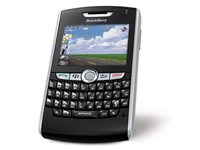

<p><img class=" alignright size-full wp-image-258" style="margin: 5px; float: right;" src="http://schoolnewsnz.fastrackdev.com/wp-content/uploads/2012/02/SN_16_-_Cell_Phone.jpg" alt="SN 16 - Cell Phone" width="200" height="150" />How much should be spent on ICT devices for students is a contentious subject – a dichotomy between what will best enhance learning versus placing excessive financial demands on schools and parents.</p>
<p> <!--more--> </p>
<p>But according to keynote speaker, Dr Jan Herrington, the use of increasingly affordable mobile phones is a much underused resource in enabling additional personalised approaches to learning where students do not have access to computers.</p>
<p>Dr Herrington is professor of education at Murdoch University in Perth. Her recent research has focused on mobile phone design based research and the use of authentic tasks as a central focus for the e-learning courses she runs. She has written several books on the subject. She said that mobile phones were carried by many students of all ages these days but were often just regarded as a disruptive influence by their schools. &#8220;I&#8217;m thinking, this is such a powerful thing – why aren&#8217;t we using it?&#8221;</p>
<p>Dr Herrington said mobile phones and similar devices are still used very little in a formal educational learning context and where they were used, it was often very much from the teacher&#8217;s perspective. &#8220;We can make a much bigger difference if we put these things into the hands of our students.&#8221;</p>
<p>She told her audience that a substantial grant from the Australian Learning and Teaching Council had allowed research into enhancing higher education in teaching and learning by using a number of different mobile phones, which eventually led to new pedagogies, a book and a website.</p>
<p>That research had been put to use in western Australia with three groups of about 25 student teachers.</p>
<p>&#8220;The way these units are often taught is that we are learning from technologies or about technologies – not learning with technologies. Generally the effect of this is that it is very transitory learning, or lack of transfer – or worse, they&#8217;d end up hating the technology. We set out to use these devices as cognitive tools.&#8221;</p>
<p>A definition she quoted was: &#8216;Students cannot use cognitive tools without thinking deeply about the content that they&#8217;re learning, and if they choose to use these tools to help them learn, the tools will facilitate the learning process.&#8217; &#8220;We set an authentic and a complex task. We gave them a range of different technological tools. We got the students to create a genuine product that they would share with others.&#8221;</p>
<p>The results had been very successful, she said.</p>

EXCLUSIVE: Teachers used to be paid two to three times more than minimum wage workers,…
After an “overwhelming” vote to reject the latest Government offer, secondary school teachers will begin…
Second-language learning should be compulsory, says a new report from a forum bringing together academics,…
A new entitlement aimed to improve access to learning support coordinators for schools with students…
Educators have raised questions about the Ministry of Education’s new secondary school subjects, set to…
Professional learning and development (PLD) for teachers needs to be higher impact for teachers and…
This website uses cookies.